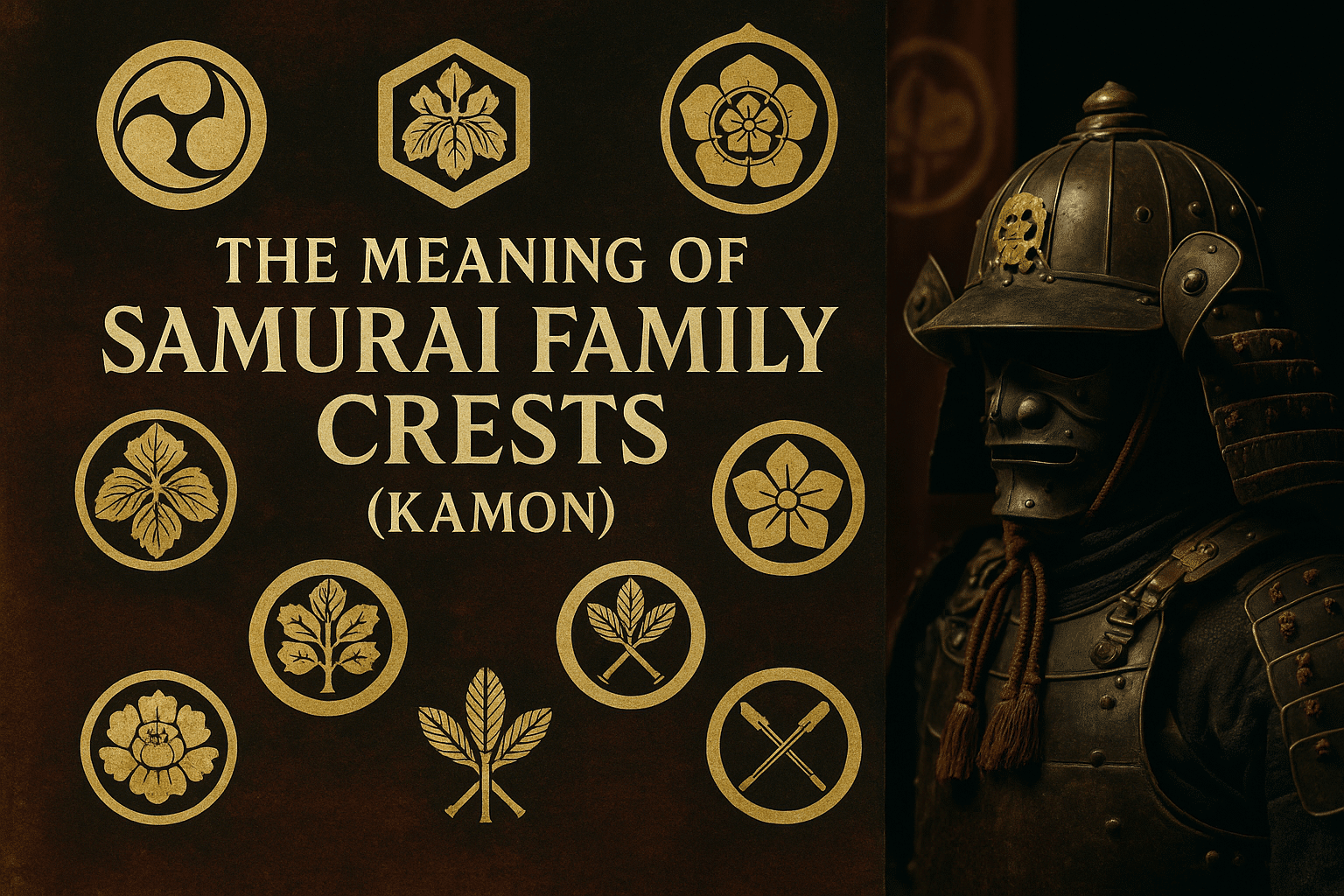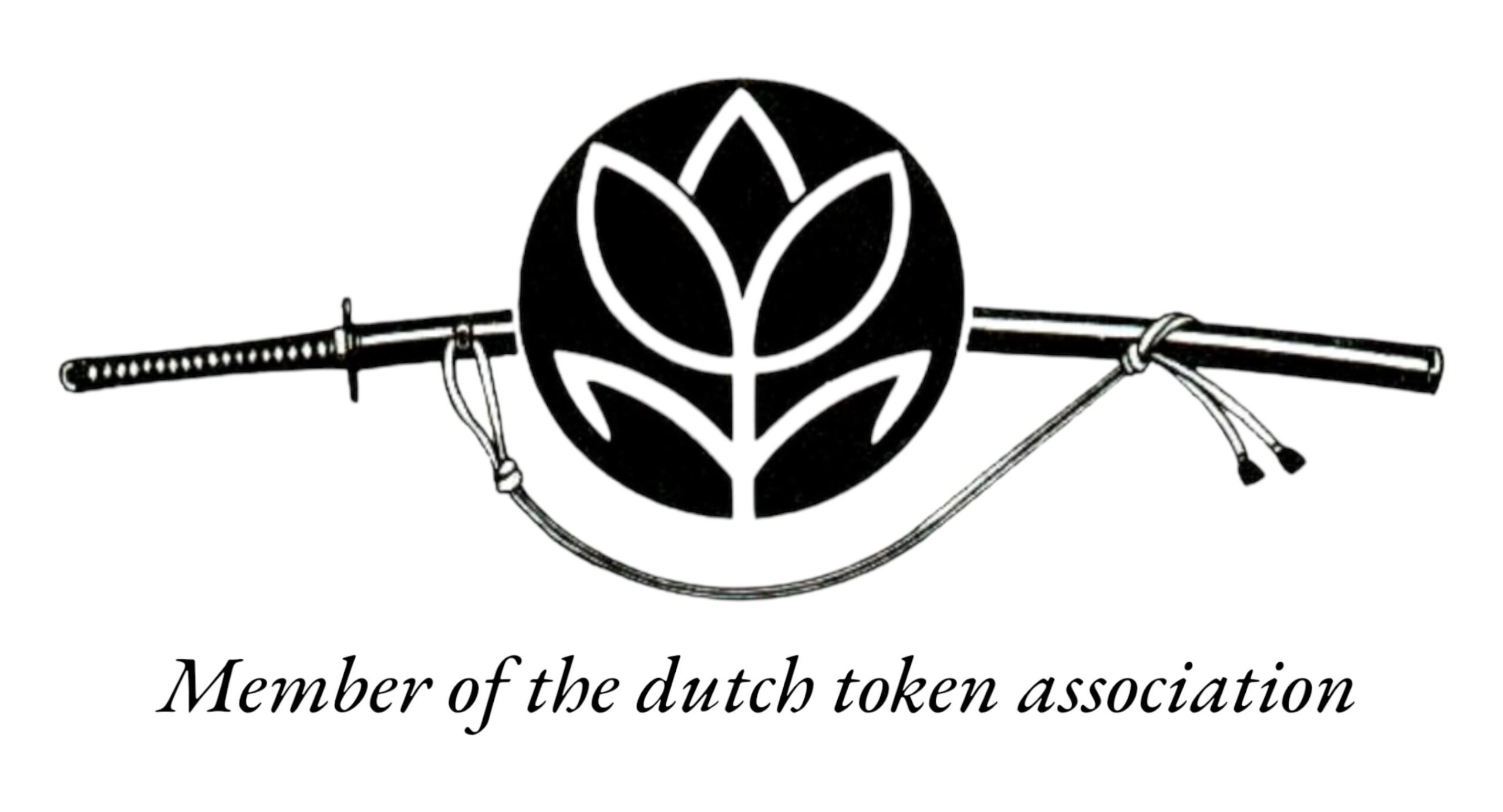Introduction: Symbols of Legacy
In feudal Japan, identity was more than a name—it was a legacy carried in the form of a symbol. Samurai family crests, known as kamon, served as powerful emblems of heritage, honor, and social distinction. Originally used to identify noble families on banners and armor during battle, kamon evolved into intricate signs of lineage and pride, passed down through generations. More than mere decoration, each design—whether a stylized plant, geometric shape, or mythical creature—told a story of values, victories, and clans. Today, kamon remain woven into the fabric of Japanese culture, adorning everything from traditional clothing to modern logos, quietly preserving the legacy of the samurai in the present day.
What Is a Kamon?
A kamon, often simply referred to as a “mon,” is a traditional Japanese family crest used to signify lineage, ancestry, and social status. Much like European heraldic symbols, kamon serve as emblems of identity, passed down through generations and often closely tied to the history and prestige of a family.
Kamon originated during the Heian period (794–1185), initially used by noble families in the imperial court to distinguish their belongings and clothing. By the Kamakura period (1185–1333), their use had widened among the samurai class, who adopted kamon to represent their clans in battle, on banners, armor, and eventually on formal attire. These symbols became vital identifiers in a feudal society where duty to family and loyalty to one’s house were paramount.
Each kamon features a distinct graphic design, usually inspired by flora, fauna, geometric shapes, or natural elements. While over 20,000 kamon have been recorded, many follow stylistic conventions that signal regional ties or shared ancestors. For example, the chrysanthemum crest is famously associated with the Imperial family, while more common families might bear variations of plum blossoms, cranes, or circular shields.
Beyond their practical use, kamon also held symbolic meaning—communicating virtues such as strength, loyalty, or harmony—as well as reflecting a family’s aspirations or achievements. In this way, a kamon served not just as a badge of identity but a visual legacy embodying the honor and values of samurai families.
The Samurai and Their Crests
In feudal Japan, samurai were more than warriors—they were symbols of honor, loyalty, and lineage. Central to their identity were kamon, or family crests, minimalist yet powerful emblems that communicated a samurai’s clan affiliation, rank, and social standing. These crests weren’t chosen at random; they were steeped in history and often passed down through generations, evolving alongside a family’s legacy.
Kamon served a critical function on the battlefield. In the chaos of war, these distinct marks—emblazoned on armor, banners, and tents—allowed allies to identify one another and distinguish friend from foe. Each symbol, whether a stylized chrysanthemum, hawk feather, or geometric pattern, told a story of bloodlines, allegiances, and valor.
Beyond warfare, kamon were a strategic tool in diplomacy and court life. Prominent clans like the Tokugawa, Oda, and Minamoto used their crests to assert political influence, sign treaties, and signal marriage alliances. The designs themselves conveyed messages—strength, refinement, or divine favor—carefully chosen to reflect the clan’s image and ambitions.
For the samurai, a kamon was not just decorative—it was a badge of pride and a constant reminder of duty. Even today, the legacy of these crests lives on, echoing the values and identities that shaped Japan’s warrior aristocracy.
Design and Meaning
Kamon designs are steeped in layered symbolism, each element carefully chosen to reflect the values, virtues, and legacy of the samurai family it represents. These crests functioned as more than identifiers—they were visual statements of heritage, honor, and belief.
Floral motifs are among the most prevalent. The chrysanthemum, revered as a symbol of longevity and imperial authority, might signal a family’s loyalty to the emperor or aspirations of nobility. The paulownia, associated with power and prosperity, often appeared in crests of high-ranking clans and was even used by the Tokugawa shogunate. Sakura (cherry blossoms), symbolizing the fleeting nature of life, expressed a samurai’s acceptance of mortality and dedication to living honorably.
Faunal imagery conveyed distinct personality traits and strengths. The crane and turtle, both symbols of longevity and good fortune, represented stability and wisdom. Dragons and tigers evoked strength, courage, and martial prowess—ideal attributes for warrior families. The hawk or falcon, known for sharp vision and precision, communicated strategic intellect and vigilance.
Weaponry and martial symbols were direct assertions of might and readiness. Arrows, swords, and shields not only broadcast a clan’s military capabilities but also signaled values like protection, justice, and honor. Some kamon featured stylized armor parts, showcasing the family’s deep connection to the warrior class.
Curved lines, geometric shapes, and patterns weren’t mere decoration—they held significance, too. Circular motifs often symbolized unity and continuity, while interlocking shapes could denote family alliances or the interconnectedness of nature and human conduct.
Ultimately, every kamon told a story. Whether woven into a battle standard or carved into a family seal, these emblems communicated a clan’s ideals and aspirations with elegant precision, continuing to resonate centuries after their creation.
Variation and Customization
Kamon were never static emblems; they evolved alongside the samurai families they represented. As clans rose or fell in power, formed strategic marriages, or aligned with influential shogunates, they often modified their crests to reflect these new realities. A subtle change in petal count, the addition of a border, or the combination of two distinct motifs could signify a shift in allegiance or the birth of a new branch within a powerful lineage.
Over generations, even within a single family, various kamon emerged to distinguish different branches while maintaining a visual link to the original crest. These customizations allowed samurai to honor ancestral ties while expressing personal identity, political alignment, or regional pride.
Religious beliefs also influenced the evolution of kamon. As Buddhism and Shintoism interwove with daily life, families sometimes incorporated sacred symbols such as lotus blossoms or torii gates into their crests. The result is a tapestry of over 200,000 known kamon variations today—each a story encoded in symbolism, capturing the legacy and individuality of the samurai who bore them.
Kamon in Battle and Ceremony
In samurai society, kamon were far more than decorative emblems—they played vital roles both on the battlefield and in formal ceremonies. During times of war, kamon were emblazoned on flags (nobori), banners (hata-jirushi), and armor, serving as unmistakable symbols that identified clans and differentiated allies from enemies. These crests, often rendered in bold, contrasting designs, allowed warriors to rally under a common emblem, reinforcing loyalty, discipline, and unity amid the chaos of battle.
Kamon adorned items like breastplates, helm ornaments, and even horse trappings, turning animals and equipment into mobile heralds of a family’s legacy. They were not merely functional; they were declarations of pride, reputation, and martial heritage, projecting power and lineage across the battlefield.
In peacetime, their role shifted to more ceremonial functions. Kamon appeared on formal kimono, lacquerware, folding screens, and family tombstones, symbolizing continuity and honor in rites of passage such as weddings, funerals, and coming-of-age ceremonies. These quiet yet profound uses ensured that the family’s identity and values remained visible across generations, preserving ancestral honor even outside the theater of war.
For the samurai, whether engaged in combat or paying respects at a shrine, the kamon was a visual thread that bound warrior to clan, past to present, and action to identity.
Kamon Today: Echoes of the Past
Though rooted in Japan’s feudal era, kamon continue to weave their presence into the fabric of modern life. These centuries-old emblems still appear today—quiet yet potent symbols of identity, heritage, and cultural refinement.
One of the most enduring presences of kamon is on family tombstones. Engraved with care, these crests honor ancestral lines, offering continuity between generations. They serve not just as decorative motifs but as visual testaments to familial pride and remembrance.
In business, especially among traditional enterprises like sake breweries, kimono makers, or ryokan inns, kamon often appear as corporate logos—lending historical gravitas and reinforcing brand lineage. For these companies, a kamon is more than just a mark; it’s a legacy that elevates reputation and links the present to a storied past.
Kamon also quietly pervade cultural artifacts and fashion. Contemporary designers may borrow elements of kamon for textiles, ceramics, or jewelry, blending modern sensibilities with time-honored motifs. Even in pop culture, their forms inspire manga, anime, and video games, subtly instilling a sense of historical depth within modern narratives.
In these ways, kamon live on—not as relics, but as dynamic echoes of Japan’s aristocratic and samurai heritage, subtly adorning the everyday with the dignity of the past.





